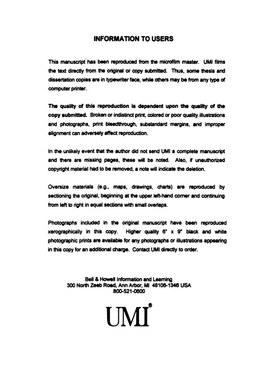| dc.contributor.advisor | Crawford, Kenneth C., | en_US |
| dc.contributor.advisor | Stensrud, David J., | en_US |
| dc.contributor.author | Elmore, Kimberly Laurence. | en_US |
| dc.date.accessioned | 2013-08-16T12:30:52Z | |
| dc.date.available | 2013-08-16T12:30:52Z | |
| dc.date.issued | 2000 | en_US |
| dc.identifier.uri | https://hdl.handle.net/11244/5946 | |
| dc.description.abstract | A cloud model ensemble forecasting approach is developed to create forecasts which describe the range and distribution of thunderstorm lifetimes that may be expected to occur on a particular day. Such forecasts are crucial for both anticipating severe weather and ensuring the smooth flow of air traffic at busy, hub airports. Storm lifetime is an important characteristic to examine because long-lasting storms tend to produce more significant weather, and have a greater impact on air traffic, than do storms with brief lifetimes. | en_US |
| dc.description.abstract | Eighteen days distributed over two warm seasons are examined. Soundings valid at 1800 UTC, 2100 UTC and 0000 UTC, provided by the 0300 UTC run of the operational Mesoeta model from the National Centers for Environmental Prediction, are used to provide initial conditions for the cloud model ensemble. These soundings are from a 160 x 160 km square centered over the location of interest and are shown to represent a likely range of atmospheric states. A minimum threshold value for maximum vertical velocity within the cloud model domain is used to estimate storm lifetime. Forecast storm lifetimes are verified against observed storm lifetimes, as derived from the Storm Cell Identification and Tracking algorithm applied to WSR-88D radar data from the National Weather Service (NWS). | en_US |
| dc.description.abstract | When kernel density estimates are applied to the pooled data set consisting of all 18 days, a vertical velocity threshold of 8 m s-1results in a forecast probability density function (pdf) of storm lifetime which is closest to the observed pdf. Model results from all 18 days also reveal that the storm lifetime resulting from a given input sounding cannot be determined by analyzing the bulk sounding parameters, such as convective available potential energy, bulk Richardson number (BRN), BRN shear, or storm relative helicity. Standard 2 x 2 contingency statistics reveal that under certain conditions, the ensemble model displays some skill locating where convection is most likely to occur. Contingency statistics also show that when storm lifetimes of at least 60 min are used as a proxy for severe weather, the ensemble shows considerable skill at identifying days that are likely to produce severe weather. Because the ensemble model appears to have skill in predicting the range and distribution of storm lifetimes on a daily basis, the forecast pdf of storm lifetime is used directly to create probabilistic forecasts of storm lifetime, given the current age of a storm. Such a product could furnish useful information to Air Traffic controllers by providing guidance about how soon a storm is likely to affect (or cease to affect) air traffic at a specific location. Similarly, this product could provide NWS forecasters with guidance about how likely it is that a particular cell will affect a given community. | en_US |
| dc.format.extent | xiii, 148 leaves : | en_US |
| dc.subject | Convection (Meteorology) | en_US |
| dc.subject | Thunderstorm forecasting. | en_US |
| dc.subject | Physics, Atmospheric Science. | en_US |
| dc.subject | Geophysics. | en_US |
| dc.subject | Meteorology Observations | en_US |
| dc.title | Ensemble cloud model applications to forecasting thunderstorms. | en_US |
| dc.type | Thesis | en_US |
| dc.thesis.degree | Ph.D. | en_US |
| dc.thesis.degreeDiscipline | School of Meteorology | en_US |
| dc.note | Advisers: David J. Stensrud; Kenneth C. Crawford. | en_US |
| dc.note | Source: Dissertation Abstracts International, Volume: 61-02, Section: B, page: 0746. | en_US |
| ou.identifier | (UMI)AAI9962975 | en_US |
| ou.group | College of Atmospheric & Geographic Sciences::School of Meteorology | |
